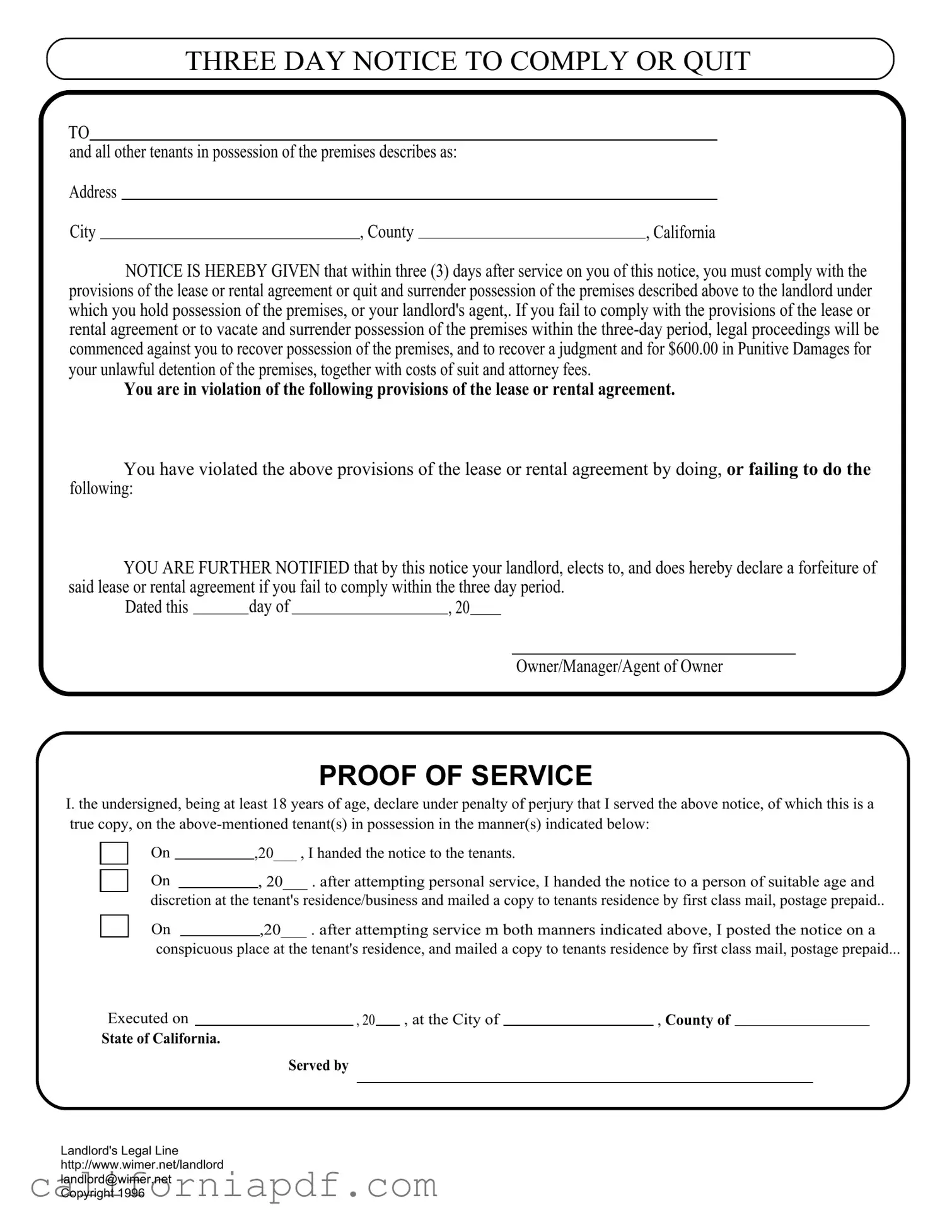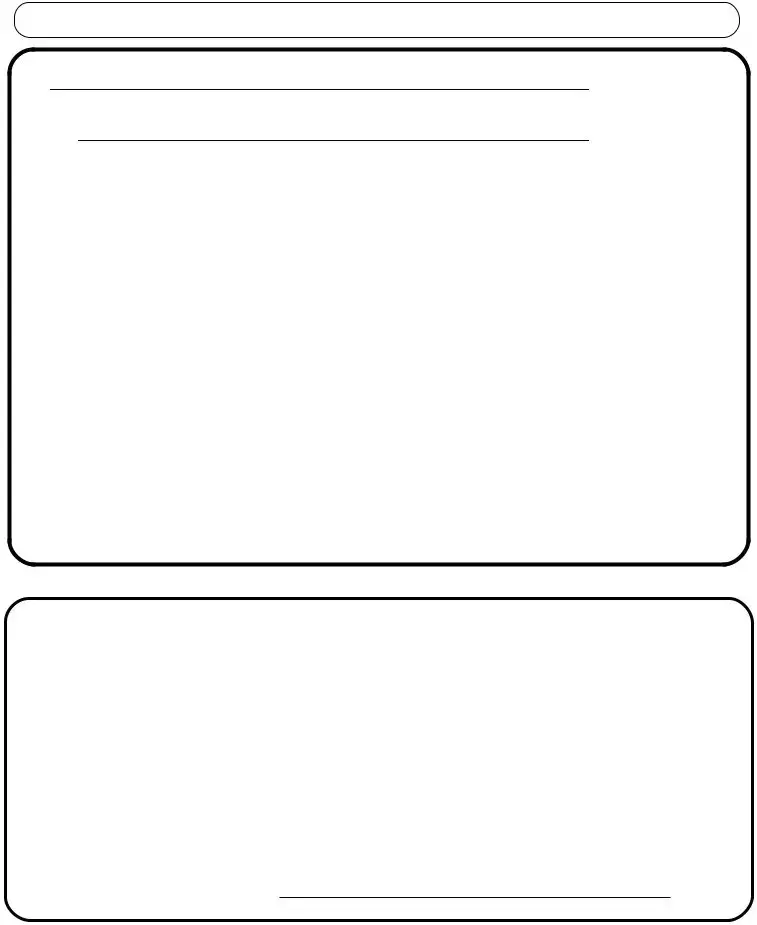The 3-Day Notice to Pay Rent or Quit is a document with a similar purpose to the 3-Day Quit Notice in California, focusing specifically on scenarios where a tenant has failed to pay rent. While the 3-Day Quit Notice addresses violations of lease terms broadly, the 3-Day Notice to Pay or Quit is narrowed down to non-payment of rent. Both documents give tenants a concise deadline—three days—to address the issue at hand (either by complying with lease terms or paying the overdue rent) or face legal action, emphasizing the seriousness of the situation and the landlord's right to initiate eviction proceedings for non-compliance.
The 30-Day Notice to Vacate is another document that bears similarity to the 3-Day Quit Notice, though it typically applies in different circumstances, such as the end of a month-to-month lease or other reasons that require a tenant to vacate, which are not necessarily related to a lease violation. Unlike the immediate urgency conveyed by a 3-Day Quit Notice, a 30-Day Notice provides a more generous timeframe for the tenant to make arrangements to leave the property. However, both documents serve the fundamental purpose of notifying tenants of the need to vacate the premises under certain circumstances.
The Unconditional Quit Notice is perhaps the most severe compared to the 3-Day Quit Notice, as it demands that a tenant vacate the premises immediately without any opportunity to cure the violation. While the 3-Day Quit Notice offers tenants a brief period to rectify their lease violation or leave, an Unconditional Quit Notice is typically used in more serious situations, such as repeated violations, significant damage to the property, or illegal activity. Both serve as formal notifications that the landlord is pursuing eviction but differ significantly in the leeway offered to the tenant.
The Eviction Notice, while a broader term, encompasses the 3-Day Quit Notice and its counterparts as a specific form of legal communication used by landlords to start the eviction process. Eviction notices can vary in terms of the notice period and the reasons behind them (e.g., non-payment of rent, lease violations, etc.). The 3-Day Quit Notice is a type of Eviction Notice, specialized in its focus on lease violations requiring quick resolution.
The Lease Violation Notice is similar to the 3-Day Quit Notice in that it alerts tenants to a breach of their rental agreement. However, it might not always carry the same urgent demand for correction within three days or the immediate threat of eviction. These notices can sometimes offer more flexible timeframes for resolving the issue, depending on the severity of the breach and the landlord's discretion. Both documents serve the crucial function of maintaining the terms of the lease and ensuring tenants are held accountable for their actions.
The Notice to Cure or Quit is another variant closely aligned with the 3-Day Quit Notice, offering tenants an ultimatum to rectify a specific violation of their lease or rental agreement or face eviction. The main difference typically lies in the specificity of the term "cure," implying that the tenant has a chance to rectify the situation — whether it's a lease violation, damage to the property, or another issue — within a given timeframe. This notice stresses the possibility of resolution through corrective action, in contrast to an unconditional demand to leave.
The Demand for Compliance or Possession is akin to the 3-Day Quit Notice, particularly in its function to demand that tenants either comply with their lease terms or surrender the premises to the landlord. It's used in situations where a violation has occurred, and the landlord is prepared to take legal action to regain possession of the property if the tenant does not comply or vacate. This type of notice underscores the legal obligations of the tenant under their lease and the consequences of non-compliance.
The Proof of Service form, while not a notice of action like the 3-Day Quit Notice, is inherently linked to it and similar documents, as it is a critical piece of the legal process, documenting the delivery of notices to tenants. This document ensures that there's a formal record of the tenant receiving the notice, which is vital if the situation escalates to court proceedings. It verifies that the tenant was properly informed, serving as an essential safeguard in the legal validity of the eviction process.

